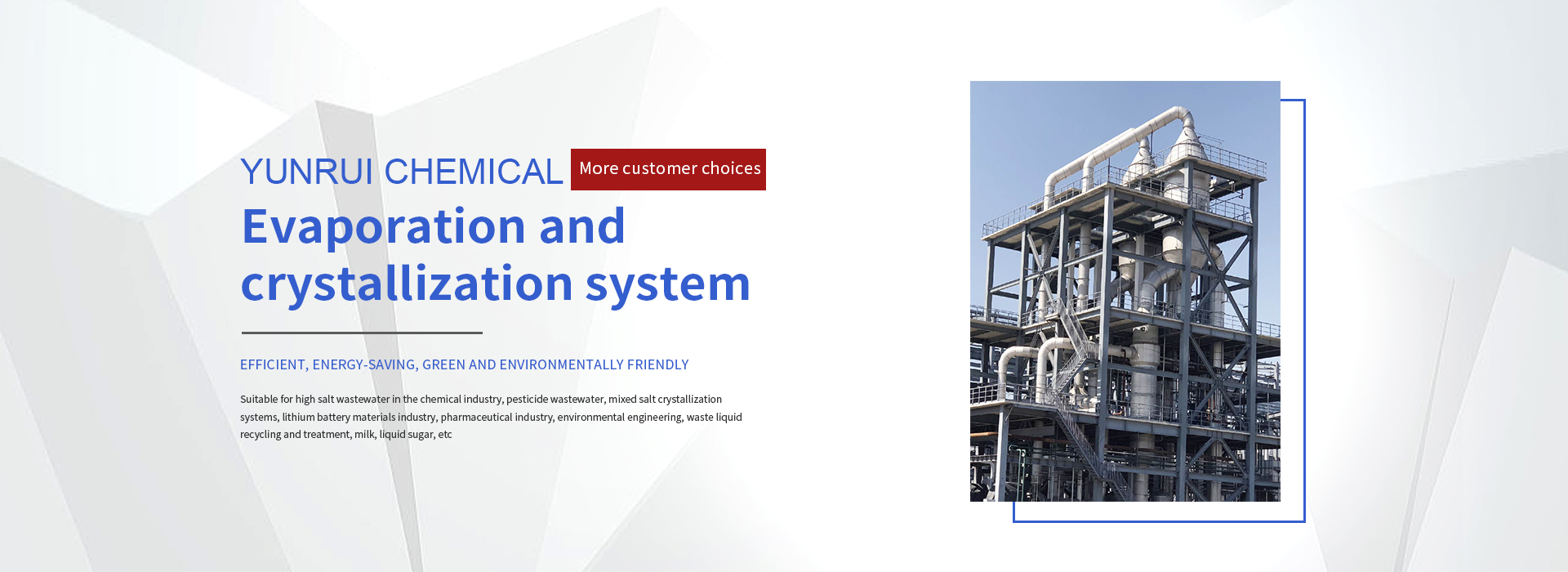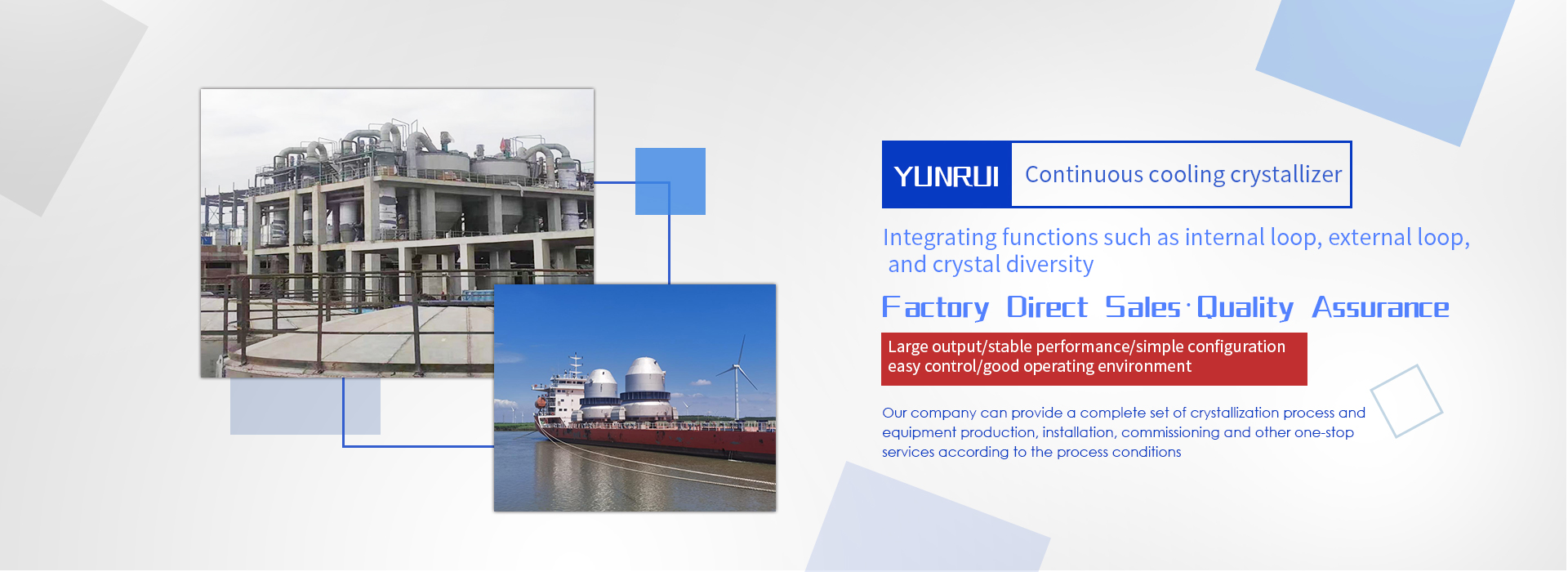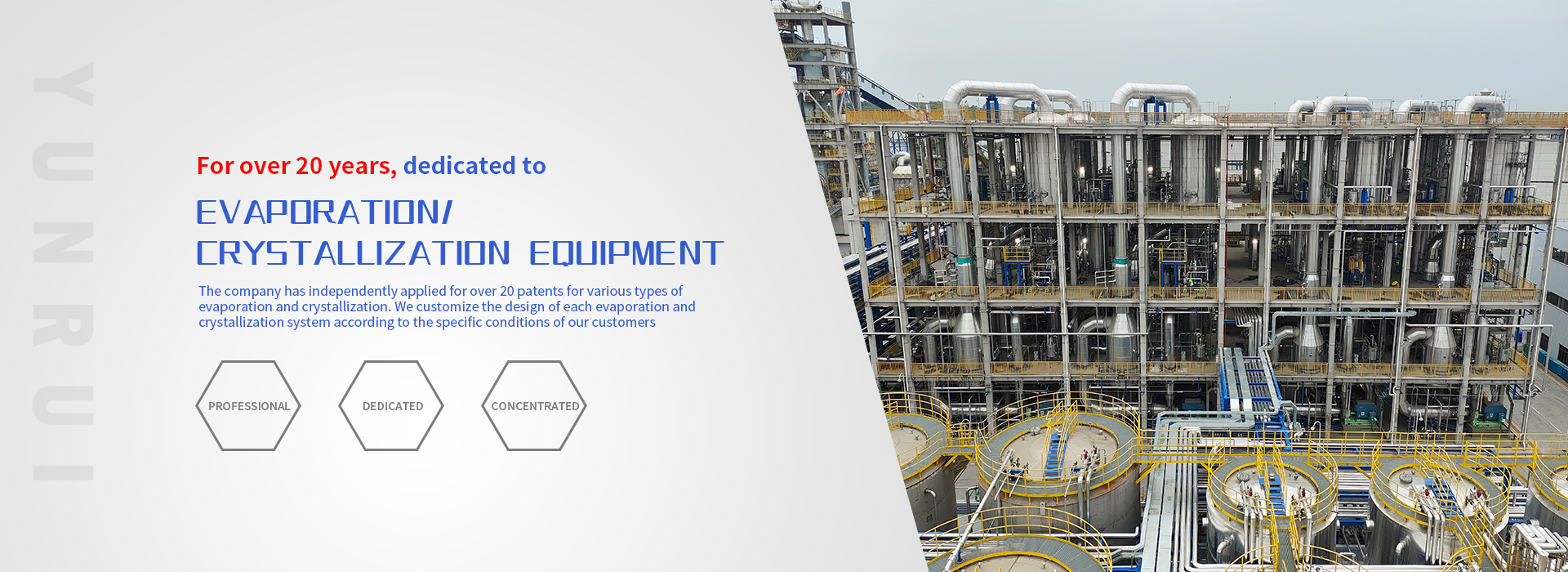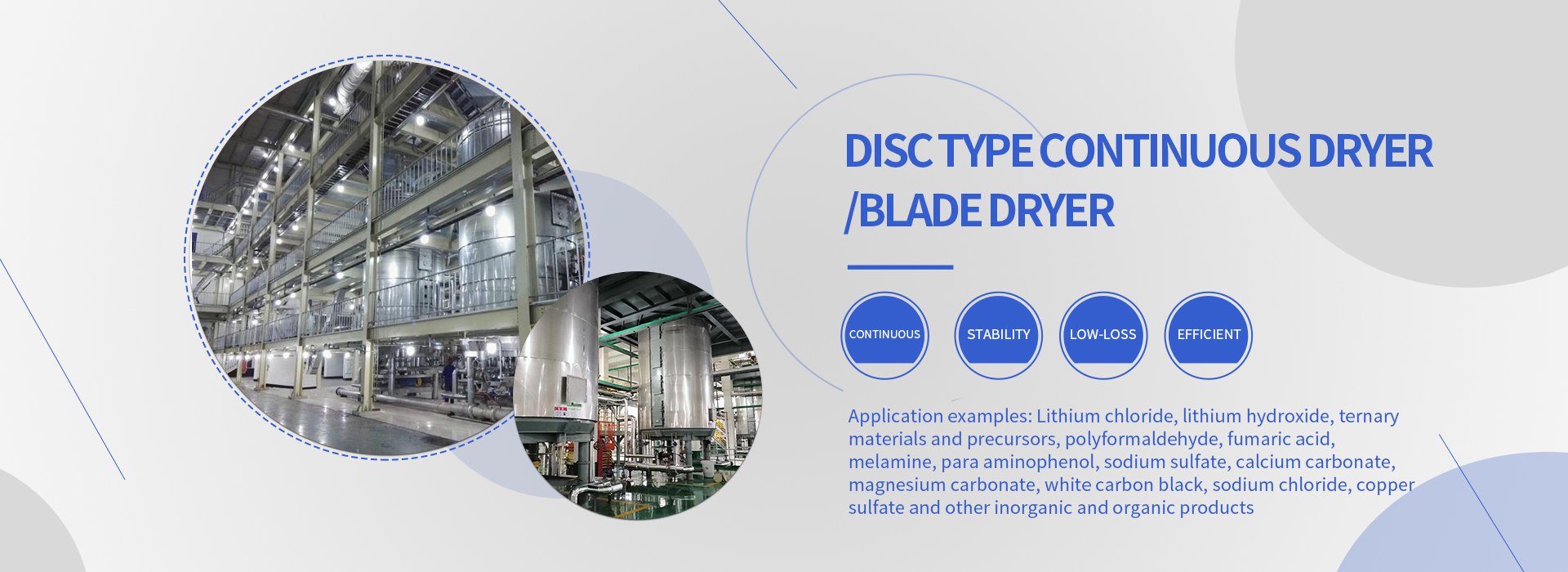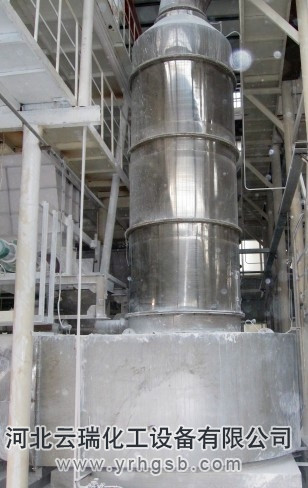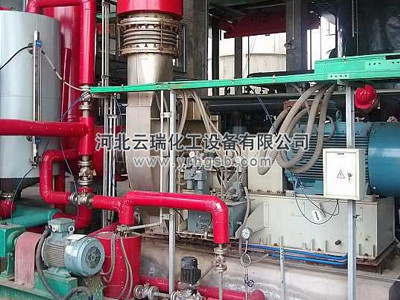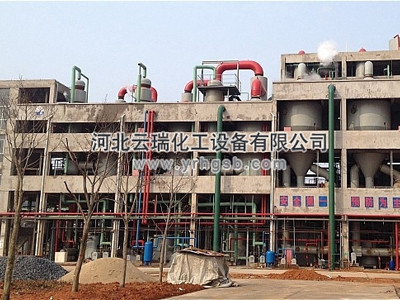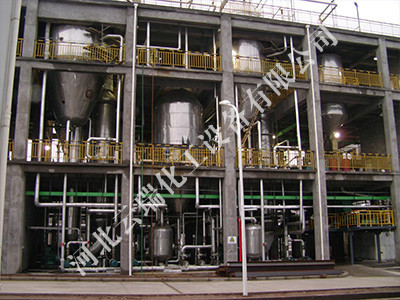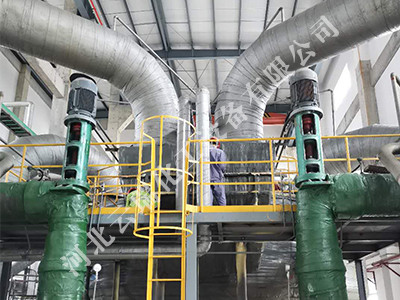Product Display
The rotary flash dryer is a vertical dryer with a rotary crushing device, which can simultaneously complete the drying, crushing, grading and other operations of materials. It is a continuous drying equipment specially designed for drying filter cake like, paste like, and slurry like materials.
working principle
The clean heat medium heated by the heat source enters the drying chamber in a tangential form and forms a strong vortex type rotating airflow together with the mechanical stirring mechanism. Wet materials are quantitatively added to the drying chamber by a feeder, and are crushed and dried under the action of stirring and vortex airflow.
The top of the drying chamber is equipped with a particle size classifier. Fine powders that meet the drying requirements are discharged from the top of the tower and collected by the separator behind. Larger particles that do not meet the drying requirements are blocked by the classification ring and returned to the drying chamber for further crushing and drying until they are dried into qualified products. They are then discharged from the drying chamber with hot air and collected by the separator. The clean exhaust gas is discharged under the action of the induced draft fan.
Performance characteristics
1. Due to the material being subjected to centrifugation, shearing, collision, and friction, it is finely dispersed into a highly dispersed state, and the relative velocity between the solid and gas phases is high, which enhances mass and heat transfer and makes the production intensity of the machine high.
2. The dry gas enters the bottom of the dryer, generating a strong rotating airflow that has a strong flushing effect on the material on the wall, eliminating wall sticking.
3. In the high-temperature zone at the bottom of the dryer, thermosensitive materials do not come into direct contact with the hot surface and are equipped with special devices to solve the problem of coking and discoloration of thermosensitive materials.
4. Due to the high circumferential gas velocity in the drying chamber and the short residence time of materials, it achieves high efficiency, speed, small equipment, and large production
5. Installing ceramic analyzer rings and swirl plates on the upper part of the drying chamber can control the particle size and humidity of the outlet materials to meet the requirements of different final moisture particle sizes for different materials.
6. The use of dual channel tangential air intake avoids the velocity non-uniformity of the rotating field in the radial flow field.
7. Effectively control the final moisture content and fineness by coordinating and unifying the swirl blades and inlet air velocity.
8. The rotating blade has a unique arrangement structure, characterized by low wear, wide contact surface, and high cutting force.
9. Skilled in handling heat sensitive materials, the bottom of the host belongs to the high-temperature zone, where the gas velocity is high and there is a cooling water protection device to avoid the possibility of material coking and discoloration.
10. Low system resistance, high thermal efficiency, good operating environment, and low labor intensity.
11. The host adopts a new sealing structure, which extends the service life of the host bearings and the bearing seat is equipped with a water isolation sleeve circulation cooling device.
Adapt to materials
Especially suitable for dry filter cake like, paste like, and slurry like materials:
Organic compounds: pesticide granules, lauric acid, benzoic acid, benzoic acid, fungicide, sodium oxalate, cellulose acetate, etc.
Dyes: anthraquinone, black iron oxide, indigo pigment, butyric acid, titanium hydroxide, zinc sulfide, various azo dye intermediates.
Inorganic substances: borax, calcium carbonate, hydroxides, copper sulfate, iron oxide, barium carbonate, antimony trioxide, various metal hydroxides, various heavy metal salts, synthetic cryolite, etc.
Ceramics: kaolin, silica, clay, etc.
Food: soy protein, gelatinous starch, wine trough, wheat sugar, wheat starch, etc.
tower general contractor
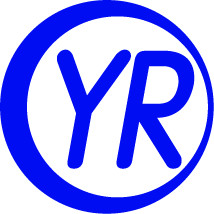
 中文(簡體)
中文(簡體) 